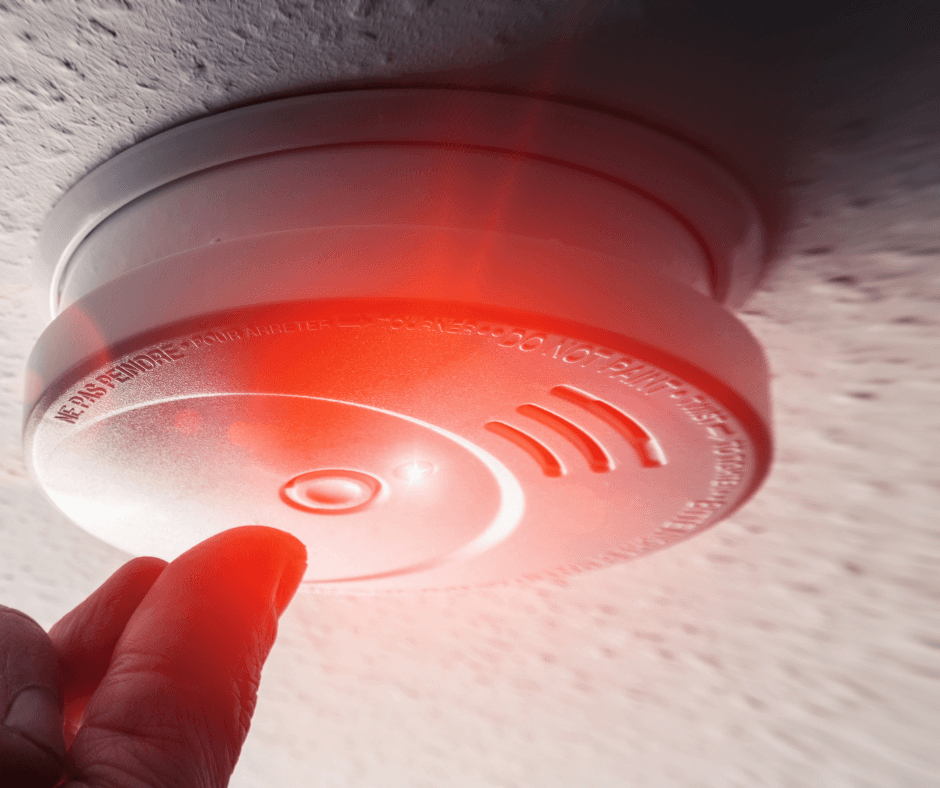Aug 16, 2024

Every year, there are almost 400,000 house fires. Half of all house fire-related deaths occur in homes where there were working smoke detectors. Knowing your smoke detectors is very important for the safety of you and your family.
There are various features that define the style of smoke detector in your home - type of sensor, power source and smart features.
Types of Sensors
The two types of smoke detectors are ionization and photo-electric. Ionization smoke alarms have a small amount of radioactive material that ionizes the air and creates a flow of electricity between two charged plates. As smoke enters the detector, it disrupts the electricity and triggers the alarm. These are best for large flaming fires.
The second type is photo-electric. These contain a light source and light detector. During normal use, the light source doesn't point at the sensor. When smoke passes through the detector, however, it bends the light so that it hits the sensor and triggers the alarm. These are best for smoldering fires.
The safest way to proceed with your smoke detector choice is to install both types or install dual-sensor smoke alarms. A dual-sensor alarm can detect both flaming fires and smoldering fires.
Power Source
Smoke detectors are primarily either battery-operated or hardwired. Battery operated rely on a battery, so you will need to change these regularly. Hardwired are connected to your electricity, so if there is a power-outage, they won't work. There are pros and cons to both, so we recommend installing a hard-wired smoke detector with a battery backup.
Smart Features
Many smart features are now available for smoke and CO2 detectors. Popular options include alerts sent to your phone or other smart devices, wireless interconnectivity and self-testing.
Interconnectivity is a very important smart feature which is beneficial in larger homes. If your detectors are interconnected, they will trigger each other so they all signal at the same time.
Where to Place Smoke Detectors Around Your Home
The National Fire Protection Association recommends installing "smoke alarms inside each bedroom, outside each sleeping area and on every level of the home, including the basement." Since smoke rises, you will want to keep your detectors on the ceiling or within 12 inches of the ceiling. Keep alarms at least 10 feet away from cooking areas to reduce false signals.
How to Install Smoke Detectors
Installing battery-powered, WiFi connected detectors is simple enough for any homeowner to complete. Most detectors come with the necessary bracket and hardware; all you will need is a ladder and screwdriver.
If you are installing new hard-wired smoke alarms, you will want to call an electrician to run the appropriate wiring throughout the home.
Maintenance
Test your detectors monthly to ensure they are working properly by pressing the test button. Vacuum the detector annually to ensure dust isn't building up on the unit. If your unit is battery-operated, be sure to replace the battery annually.
FAQs
Why is my smoke detector beeping once?
This typically means low battery - replace the battery and reassess.
What do 3 beeps on a smoke detector mean?
This typically means there is a fire in the home and the alarm is triggering.
Why is my hard-wired smoke detector beeping?
This usually means that the back-up battery in your hard-wired detector needs to be replaced.
How often should I replace my detectors?
Check the bottom of your smoke detector for an exact expiration date, as they should be stamped. If the date is too worn off to see, replace them. Most detectors have a 10 year lifespan.
Why does my alarm keep going off when there's no fire?
The usual culprit of a tripping alarm is dust and debris. Be sure to clean your alarm regularly. Humidity can also trigger a false alarm, so this may be more common in the kitchen or bathroom.
